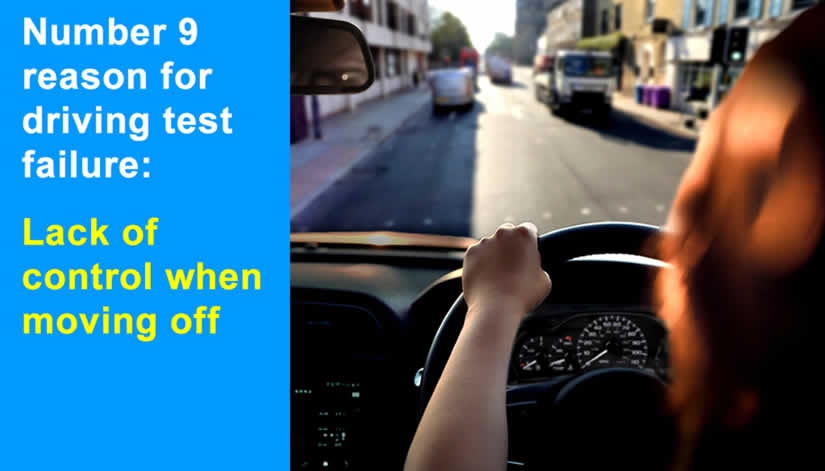During the driving test, the examiner will ask you to pull up on the left, or on the right to carry out the parking up on the right and reversing back manoeuvre. You may be asked to pull up on the left on more than one occasion, which may additionally include moving off on a hill and moving off from behind a parked car.
The examiner will not only expect you to move off safely (see top 10 driving test fail number 5), but also under full control. Any faults made under this category will be marked under the ‘Move off – Control’ section of the driving test report. Repeatedly making the same fault, or gaining a serious or dangerous fault is a test failure.
Rolling Back During a Hill Start
This fault involves the test candidate attempting a hill start, stalling the engine and rolling back a considerable distance. The issue here is not stalling the engine, but the car rolling back for some distance.
If there are some hills within a reasonable distance to the test centre, it’s highly likely that the examiner will include these areas onto the driving test routes in order to test the candidate’s ability for moving off on a slope.
The most important action here, is to regain control of the car as quickly as possible. If the car begins to roll, immediately depress the clutch and apply the foot brake. If you only rolled back a little, you may still be in with a chance of passing the driving test.
Moving Off While in Neutral and then rolling back
Similar to the issue of rolling back as above, this control issue involves the test candidate trying to move off without selecting a gear and then rolling backwards for a considerable distance.
As described on the above fault, the important action to take is to regain control and avoid rolling back a considerable distance. The moment you feel the car begin to roll, depress the clutch and foot brake, then run through the moving off procedure again.
Repeatedly Stalling When Moving Off
This is quite a common fault and it involves the test candidate repeatedly stalling when moving off. The test candidate may stall either when moving off from a parked position or when moving off from a stopped position during general driving (such as traffic lights for example). In this situation, you can fail the driving test for:
- repeatedly stalling when moving off
- when moving off, stalling in a hazardous place, such as into a junction for example
If you’re stalling during a driving test but tend not to stall during lessons, it’s likely that nerves are the reason. Test candidates can become anxious during the test and feel that they’re being too slow and hesitant.
This is not the case when it comes to moving off. It’s better to be a little slower when moving off rather than risk stalling. The examiner doesn’t expect you to drive perfectly, so lift the clutch up slowly and avoid stalling.
Repeatedly Stalling When Moving Off During One Occasion
During one occasion of attempting to move off, the test candidate repeatedly stalls because of a control issue such as:
- having the car in neutral or the wrong gear
- attempting to move off with the parking brake / handbrake applied
- poor clutch control
After repeatedly stalling the car and failing to identify the reason, the driving examiner provides guidance and advises the candidate on what to do.
These situations often arise as result of stress and test anxiety. During every part of driving, run through routines that will help you remember things.
